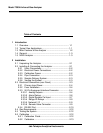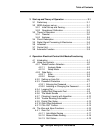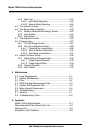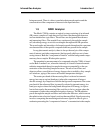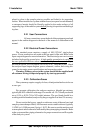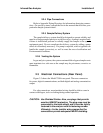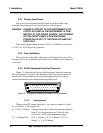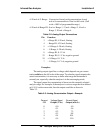
1-3
Infrared Gas Analyzer Introduction 1
Teledyne Analytical Instruments
being measured. There is a direct correlation between absorption and the
concentration of the component of interest in the liquid mixture.
1.5 NDIR Analyzer
The Model 7300A contains an optical system consisting of an infrared
(IR) source, sample cell, and detectors. In front of the thermopile detectors
are four interference-type filters. These filters are designated the reference
and measuring filters. The sample flows continuously through the sample
cell, absorbing energy at various wavelengths throughout the IR spectrum.
The wavelengths and intensities of absorption peaks throughout the spectrum
are characteristic of the specific compounds that are present in the sample.
In any photometric analysis, there is always the analysis of the compo-
nent of interest, and other components (background) which are not of mea-
suring interest. Both the “component of interest” and the background compo-
nent may have complex IR absorption spectra.
The quantitative measurement of a compound using the 7300A is based
on the Beer-Lambert Law, where the intensity of a beam of monochromatic
radiation transmitted through a sample decreases exponentially as the con-
centration of the absorbing sample increases. The use of two filters and
detectors allows cancellation of energy changes due to turbidity, dirty sample
cell windows, aging of the source and sudden temperature changes.
The center pass band of the measuring filter is selected to transmit
energy in a narrow region (band pass) where the component of interest
absorbs strongly by comparison with the background components.The center
pass band of the reference filter is generally selected to transmit energy in a
band pass region where the background absorption of IR energy is equiva-
lent to that seen by the measuring filter, and also to be in a region where the
component of interest has minimal absorption of energy. The IR radiation
passes through the sample and filters and strikes the detectors, which convert
the radiation into electrical signals, and are then amplified. Signal processing
involves comparing the measuring and reference signals in order to give a
readout representing the “component of interest” concentration in the sample.






